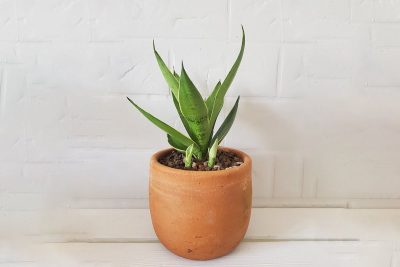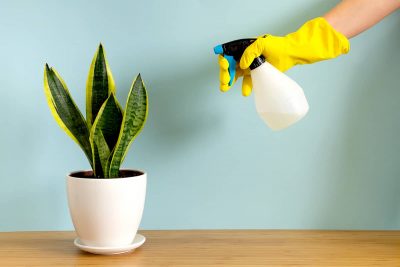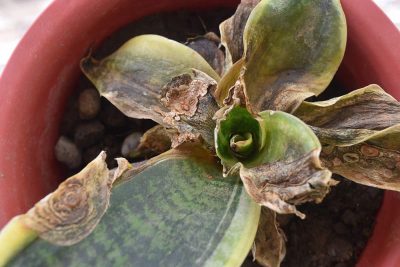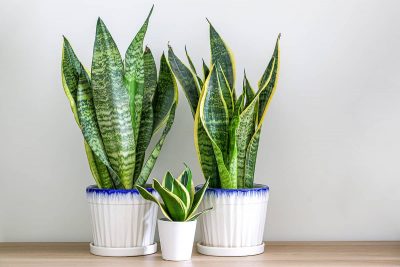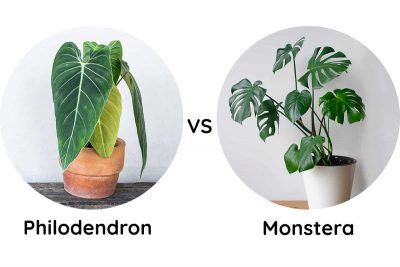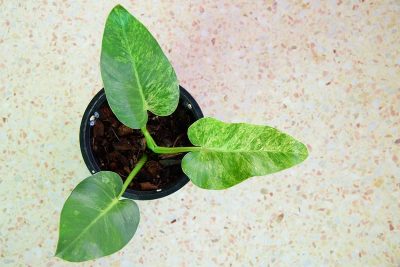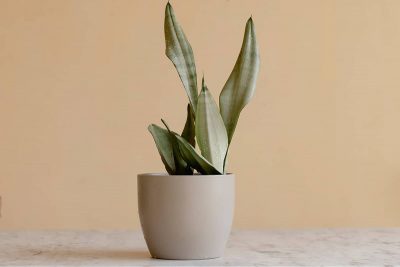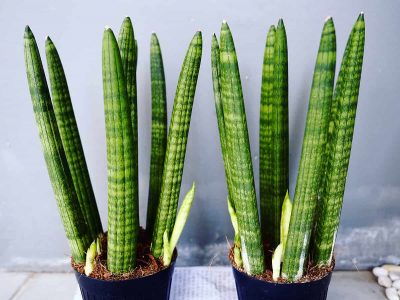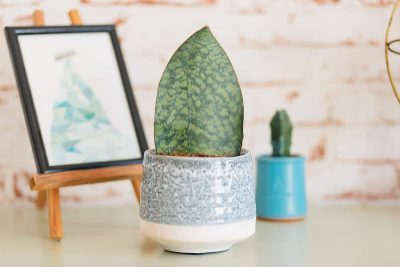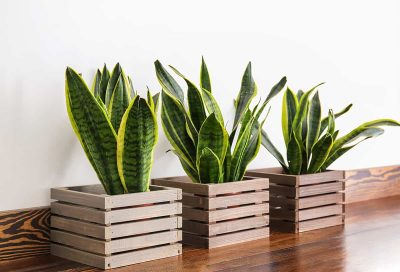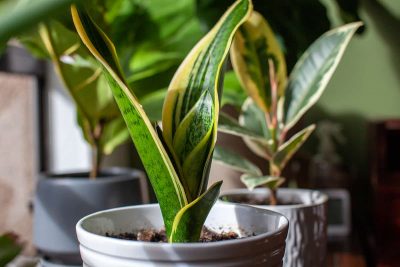This unusual snake plant is one you may not have seen before, and that’s because it’s a fairly new variety. The Night Owl Snake Plant does not grow in the wild, and is actually a cultivated hybrid which is a result of crossing the Sansevieria trifasciata Laurentii with the Sansevieria trifasciata Hahnii (better known as the Bird’s Nest Snake Plant’.)
A snake plant will tell you it needs water by displaying symptoms such as browning leaves, but you can figure out if your plant needs water before this happens by checking the condition of the soil. Check out these tips to make sure you bring your best watering game to your snake plant.
Snake plants are renowned for being low maintenance, easy-care plants which even the most inexperienced grower can keep alive, however this does not mean that they are completely free of issues. One of the most commonly reported problems amongst the various different types of snake plants is that the tips of the leaves have turned brown.
Most of us consider plant pots as simply being the vessels that keep our plants contained, and often we think more about how they look rather than what type of care they can offer the plant. Interestingly, the type of pot you choose can actually play a role in the health of your plant, so it’s something worth thinking about before you start the process of re-potting. Here we take a look at the best types of pots to use for a snake plant.
‘Philodendron’ and ‘Monstera’ are two names that you might hear used frequently to describe what is seemingly the same plant. Are these two names in fact just synonyms for each other, or are they used to denote different types of plants? Here we investigate why these names are sometimes accepted as being the same, as well as the primary differences and similarities between Philodendron and Monstera plants to help set them apart.
As you might have guessed from its name, this species of Philodendron is gigantic. Each leaf is able to grow up to 5 feet in length at maturity, and 3 feet across. It is native to parts of South America and the Caribbean. The massive heart shaped foliage of this plant is green and glossy, and is a true sight to behold. It makes for a great feature in the garden, and can also be grown as a houseplant.
The Moonshine Snake Plant is one of the most sought after types of snake plants, because of its pale coloring and almost ethereal look. This plant’s most prominent feature is its mint green-silver foliage which grows upright to heights of up to 2 feet. Like other snake plants, it is native to tropical West Africa, so it makes for a great house plant. It is easy to grow, but it does benefit from some slightly different care than other varieties of snake plant. Read this guide to find out exactly how to care for your Snake Plant Moonshine.
The Black Gold Snake Plant is one of the most popular types of snake plants which is kept as a houseplant. It has long, lance shaped leaves which are quite tough and fleshy. The foliage comes to a gradual point at the tips, and is dark green with yellow edging strips running vertically along the lengths of the leaves.
The Braided Snake Plant is a species of snake plant which can be braided to create a quirky and unusual look. Like other snake plants, this variety is easy to care for and requires little maintenance. It is native to Angola, and makes a great house plant because it thrives in warm environments.
The Whale Fin Snake Plant is a striking variety which is instantly recognizable from its huge single leaf that heavily resembles the fin of a whale. This plant hails from the Democratic Republic of the Congo in Africa, so it also goes by the common name of ‘Mason Congo Sansevieria’. The unusual look of this snake plant has led to a surge in its popularity as a houseplant. Here you can learn all about how to take care of this gorgeous snake plant variety.
The best size pot for a snake plant is a pot that is around half an inch bigger than the diameter of the root ball on either side. For example, if your root ball measures 11 inches across, go for a pot that is 12 inches.
The eventual size of a snake plant is going to depend largely on the variety of snake plants you are growing, along with the care you are giving it. Snake plants can tolerate low lighting levels, and as a result, they are often grown as houseplants in darker corners of the home.
